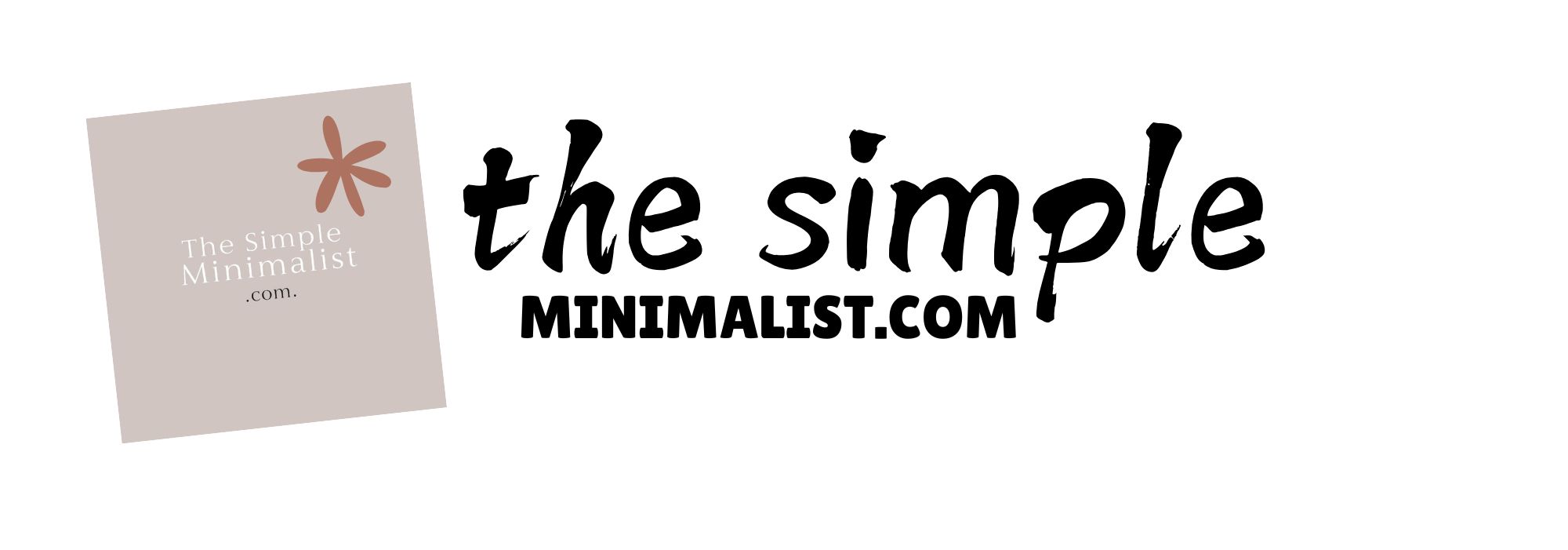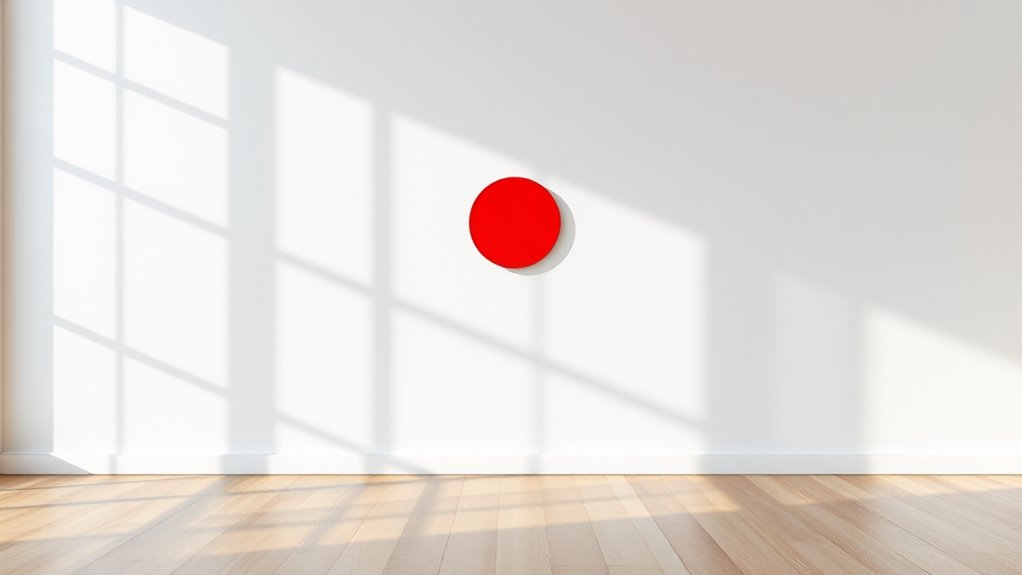Minimalism is changing modern art by embracing simplicity and purpose. It invites you to really experience art, focusing on what matters most. The clean lines and limited colors allow emotions to shine through, making each piece a reflection of your feelings and thoughts. As you explore these art forms, you'll notice how the use of space and light creates a sense of calm. Curious about how this movement connects to mindfulness and contemporary design? There's so much more to discover.
Minimalist Highlights
- Minimalism emphasizes simplicity and clarity, allowing artists to focus on essential elements and redefine the viewer's experience with modern art.
- Notable minimalist artists, like Donald Judd and Agnes Martin, explore the beauty of form and emotion through precise, understated designs.
- The use of negative space and natural light in minimalist art creates dynamic interactions that enhance viewer engagement and perception.
- Minimalist decor principles inspire contemporary design, merging aesthetics and functionality while promoting a clutter-free, intentional living environment.
- Mindfulness in minimalism encourages deeper emotional connections with art, inviting reflections on personal experiences through simplicity and intentionality.
The Origins of Minimalism in Art
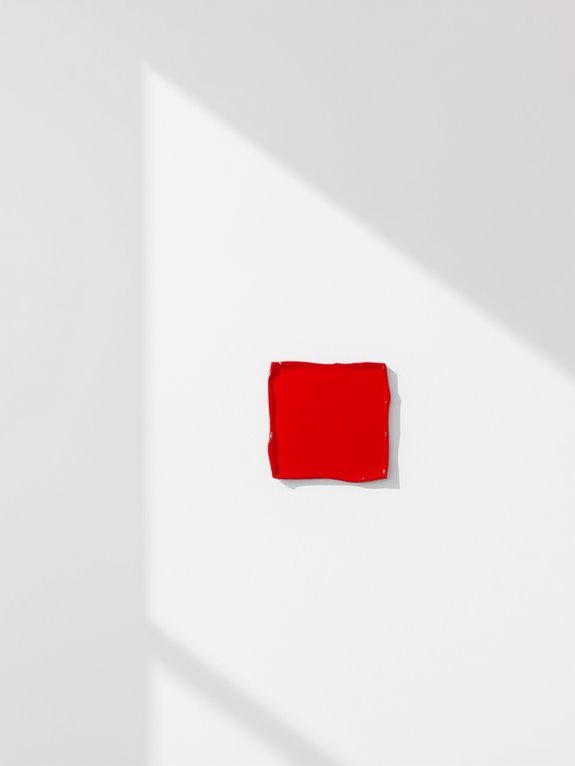
When you think about the art world, you might picture vibrant colors and intricate designs, but did you know that a movement called Minimalism emerged to challenge those very ideas?
In the late 1950s and early 1960s, artists began to strip away the excess, focusing on simplicity and form. They wanted to create art that was more about the experience than the object itself. Maximizing space with thoughtful decor choices and minimalist designs became essential elements in this movement, reflecting the desire for clarity and purpose. This approach to art paralleled the rise of minimalist decor essentials, emphasizing a harmonious blend of form and function. Incorporating eco-friendly materials in both art and decor further illustrated the commitment to sustainability and simplicity. Additionally, the use of natural light in minimalist spaces enhances the sense of openness and tranquility.
Imagine walking into a gallery and feeling a sense of calm from a single, unadorned canvas. This was revolutionary!
Walking into a gallery, you feel tranquility wash over you from a solitary, bare canvas—truly a groundbreaking experience!
Minimalism encouraged you to look deeper and appreciate the beauty in what's often overlooked. It sparked conversations about perception and meaning, inviting you to explore art in a new, profound way. Decor choices in minimalism emphasize simplicity and functionality, enhancing the overall aesthetic experience.
Wouldn't you want to immerse yourself in that experience?
Key Principles of Minimalist Art
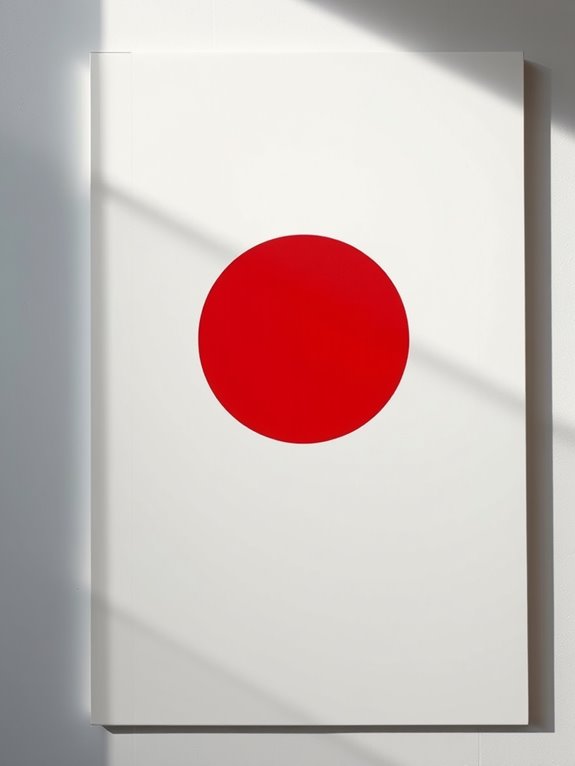
Minimalist art isn't just about what you see; it's about what you feel and experience. At its core, minimalist art emphasizes simplicity and clarity.
You'll notice that artists strip away the unnecessary, leaving only essential elements. This can make you pause and reflect, inviting you to connect with the artwork on a deeper level.
Another key principle is the use of space; it's not just about the object, but the space around it. This invites exploration and contemplation.
Color often plays an important role, too, with limited palettes that evoke strong emotions. A limited color palette helps maintain a minimalist vibe and enhances the overall experience of the artwork.
When you engage with minimalist art, you might find beauty in the quiet and the understated. Are you ready to discover this transformative experience?
Notable Minimalist Artists and Their Works
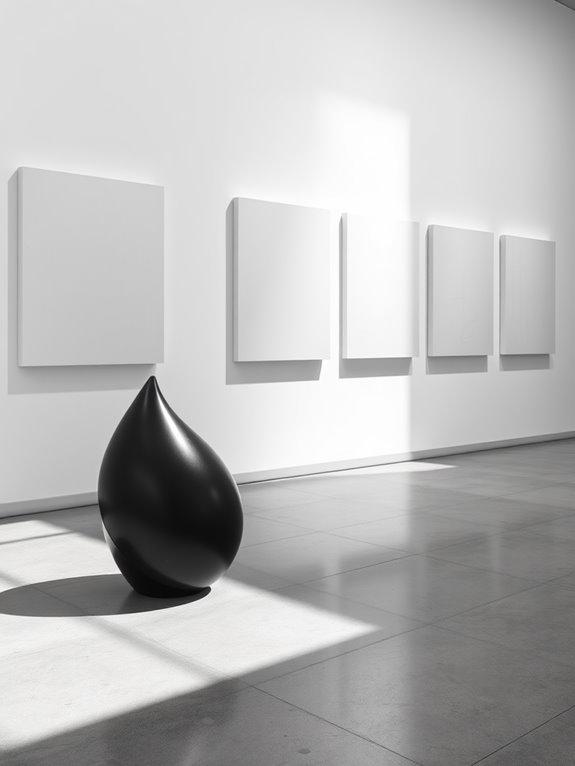
As you immerse yourself in the world of minimalist art, you'll come across several remarkable artists whose works have shaped this movement.
Think of Donald Judd, with his precise geometric forms that invite you to explore the essence of space. His approach echoes the principles of minimalist decor, emphasizing clarity and purpose in design. The simplicity of his work mirrors the beauty of minimalist home decor, where each piece is thoughtfully chosen.
Then there's Agnes Martin, whose subtle lines and soft colors evoke deep emotions and tranquility.
You might also admire Dan Flavin, who used fluorescent lights to create immersive environments, transforming how you perceive light and color.
Each artist offers a unique perspective, making you reconsider the beauty of simplicity.
As you explore their works, you'll feel inspired to reflect on how minimalism can redefine your own understanding of art. Additionally, consider how color selection impacts the overall aesthetic of minimalist decor in various settings.
Are you ready to embrace this creative journey?
The Role of Space and Light in Minimalism
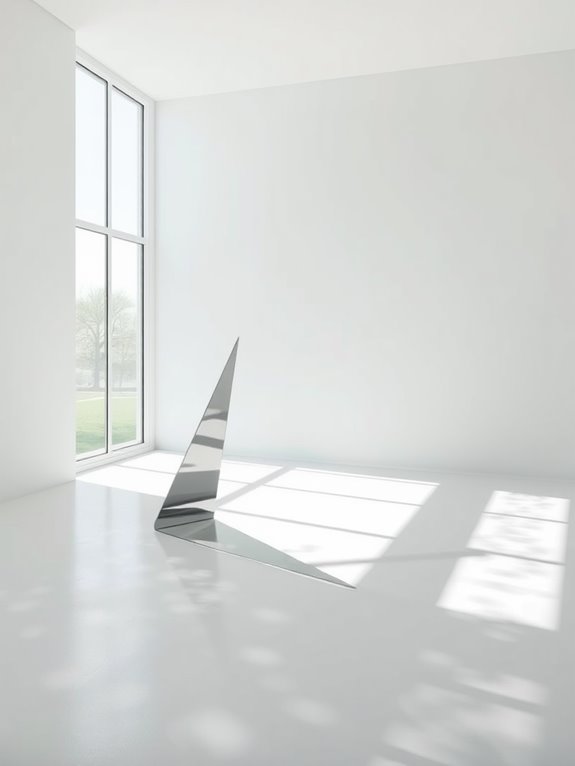
In minimalist art, space and light aren't just background elements; they play an essential role in shaping your experience.
Think about how negative space draws your eye and creates a sense of calm, while natural light can transform a piece into something alive and vibrant. Incorporating greenery and seasonal accents can further enhance the atmosphere, bringing a refreshing energy to the minimalist aesthetic. Simple arrangements of seasonal greenery can not only elevate the visual appeal but also promote a warm and inviting atmosphere. Additionally, embracing weather-resistant materials in your decor choices can help maintain this aesthetic throughout different seasons. The use of quality finishes in decor ensures that the minimalist space remains both elegant and durable over time. Furthermore, a consistent color palette of warm autumn hues can create a unified decor that enhances the overall ambiance.
How do these elements make you feel when you stand in front of a minimalist work?
Emphasis on Negative Space
Have you ever stopped to notice how the space around an artwork can be just as powerful as the piece itself?
In minimalism, this "negative space" becomes a canvas in its own right. It invites you to breathe, to reflect, and to engage with the artwork on a deeper level. Incorporating minimalist decor elements can enhance this experience by emphasizing the simplicity of both art and space. The use of natural light can transform the perception of both the artwork and its surroundings, creating an atmosphere that complements minimalism beautifully. The principles of minimalist design can further guide us in selecting decor that harmonizes with the artwork, ensuring a cohesive aesthetic.
By focusing on what's not there, artists create a dialogue between the piece and its surroundings. This interplay of space and light draws you in, urging you to explore the emotions the minimalist form evokes.
You might find yourself contemplating the absence, realizing that sometimes what's left unsaid is just as significant.
Embrace the beauty of negative space—it's here that minimalist art truly comes alive. The essence of minimalist decor essentials highlights how simplicity enhances our experience of art and space.
Influence of Natural Light
Light dances across minimalist art like a gentle breeze, transforming the experience of each piece.
When you step into a gallery, notice how the natural light interacts with the artwork. It shifts, creating shadows and highlights that breathe life into simple forms. This interaction invites you to explore deeper meanings and emotions.
Have you ever felt the warmth of sunlight illuminating a stark canvas? It's magical, isn't it? You can see how the light changes throughout the day, altering your perception and connection to the art. Incorporating natural materials into the decor can enhance the way light reflects and interacts with the space. Utilizing soft textiles such as wool throws can also create a comforting atmosphere that further complements the natural light. Additionally, adding decorative lanterns can introduce a cozy ambiance that harmonizes with the shifting light.
Embracing this dynamic relationship between space and light is essential in minimalism. It encourages you to slow down, reflect, and engage with the artwork in a way that's both profound and personal. Additionally, incorporating high-quality materials into the decor can further enhance the overall aesthetic experience.
Minimalism's Influence on Contemporary Design
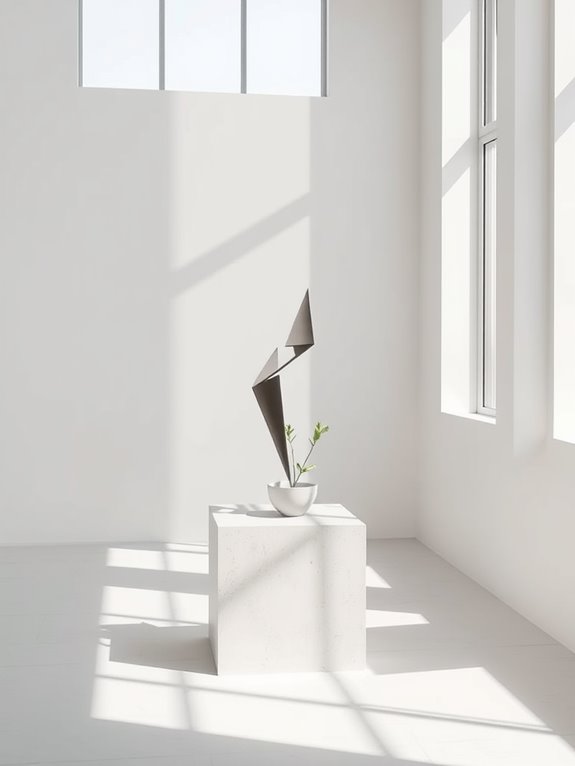
Minimalism has truly transformed contemporary design, inviting you to appreciate the beauty of simplicity.
With its focus on a simplified aesthetic, functional design principles, and eco-friendly materials, you'll find that each piece has a purpose and a story. Embracing minimalist home decor encourages a harmonious environment that promotes mindfulness and clarity. By incorporating minimalist decor essentials, you can create a space that reflects your values and enhances your daily living. The use of high-quality materials not only elevates the aesthetics but also ensures longevity in your decor choices. Additionally, the charm of minimalist decor lies in its ability to create a tranquil atmosphere that fosters creativity and inspiration. The beauty of minimalism is that it allows you to select thoughtful design elements that enhance both form and function.
How does embracing this minimalist approach inspire you to rethink your own space?
Simplified Aesthetic Appeal
In today's fast-paced world, many people are drawn to the charm of simplicity in design. You might find yourself captivated by clean lines, open spaces, and a color palette that soothes rather than overwhelms. This minimalist approach invites you to appreciate the beauty of what's essential. Imagine stepping into a room where each piece of furniture speaks to you, not just by its form, but by its purpose.
Minimalism encourages you to let go of clutter, both physically and mentally, creating an atmosphere that feels rejuvenating and calm. It's about finding joy in simplicity and allowing your surroundings to breathe. By incorporating minimalist decor essentials, you can enhance this aesthetic even further. The beauty of minimalist design lies in its ability to create a sense of tranquility that resonates with the soul. Embracing minimalist decor can transform your environment into a serene retreat where every item is curated with intention.
Why not embrace this aesthetic? You could transform your space and, in turn, your mindset, discovering the peace that comes with a simplified environment.
Functional Design Principles
When you step into a space designed with functional principles in mind, you can't help but notice how every element serves a purpose, enhancing your experience. Each piece, whether a chair or a light fixture, invites you to interact with it, creating harmony. Minimalist decor emphasizes a focus on simplicity, allowing for a more intentional and mindful atmosphere. Incorporating minimalist decor essentials can further refine your space, ensuring that every item resonates with the overall aesthetic. This approach also promotes a serene environment, where distractions are minimized, fostering a sense of peace. By embracing minimalist decor, you create an inviting space that encourages mindfulness and reflection.
You realize that less really can be more; the absence of clutter allows your mind to breathe. Imagine hosting friends in a room where every item contributes to comfort and ease. Doesn't that sound inviting?
In this kind of design, you find joy in simplicity, and functionality becomes art. You're inspired to embrace this approach in your own life, transforming spaces to reflect clarity and intention. Incorporating seasonal versatility into your decor can elevate the overall aesthetic of your home.
Minimalism isn't just a style; it's a lifestyle that encourages creativity and connection.
Eco-Friendly Material Choices
Creating spaces that reflect clarity and function naturally leads to a deeper consideration of the materials we choose. When you embrace minimalism, eco-friendly materials become essential.
Think about bamboo, reclaimed wood, or recycled metal—these choices not only beautify your space but also help the planet. Choosing sustainable materials isn't just a trend; it's a way to express care for the environment.
You're not just designing a room; you're making a statement about your values. Imagine walking into a space that feels fresh and inviting, made from materials that speak to both elegance and responsibility.
So, why not take that leap? By selecting eco-friendly options, you're actively participating in a movement that honors simplicity and sustainability.
Let's make a difference together!
The Emotional Impact of Simplicity
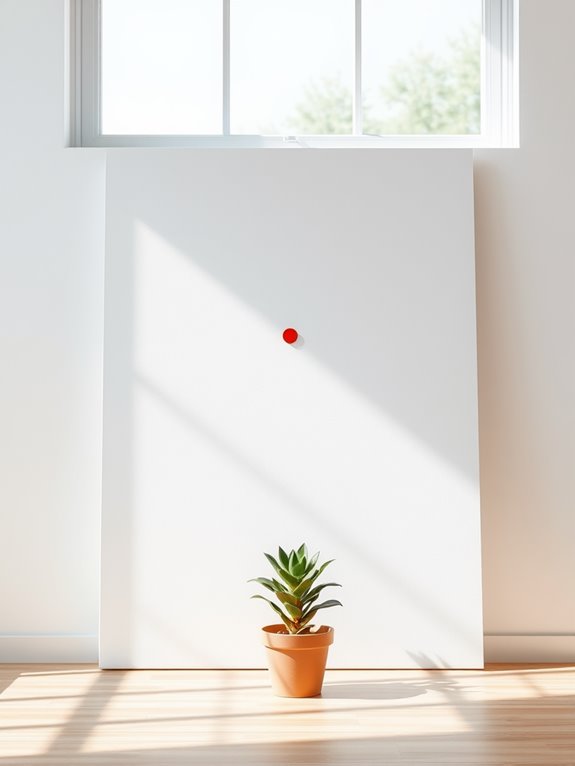
Simplicity in art often invites you to pause and truly feel, as it strips away the chaos of everyday life.
When you encounter minimalist pieces, you might notice how they create a sense of calm. The lack of clutter allows your mind to focus, connecting deeply with the emotions the artwork evokes. You may find joy in the quietness, or perhaps a sense of melancholy.
Each line and color can spark a memory or thought, urging you to reflect on your own experiences. Have you ever felt overwhelmed by too many choices?
Each stroke and hue invites reflection, prompting you to consider your journey amidst life's overwhelming choices.
Minimalism reminds you that sometimes, less is more. By embracing simplicity, you open yourself to a richer emotional landscape, where every detail becomes significant and meaningful.
Minimalism in Different Art Forms
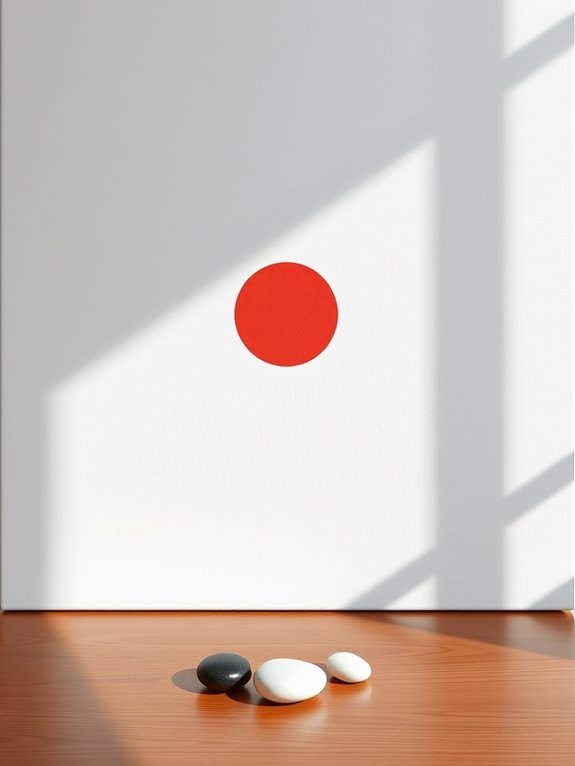
While you may associate minimalism primarily with visual arts, this powerful movement transcends boundaries, influencing various creative forms.
In music, artists strip down their compositions, using fewer notes to evoke deep emotions. Think of the haunting simplicity in a solo piano piece.
In literature, minimalist writers focus on concise language and stripped-back narratives, inviting you to fill in the gaps with your imagination.
Even in architecture, clean lines and open spaces create a sense of peace and clarity.
Each of these forms encourages you to appreciate what's essential.
The Connection Between Minimalism and Mindfulness
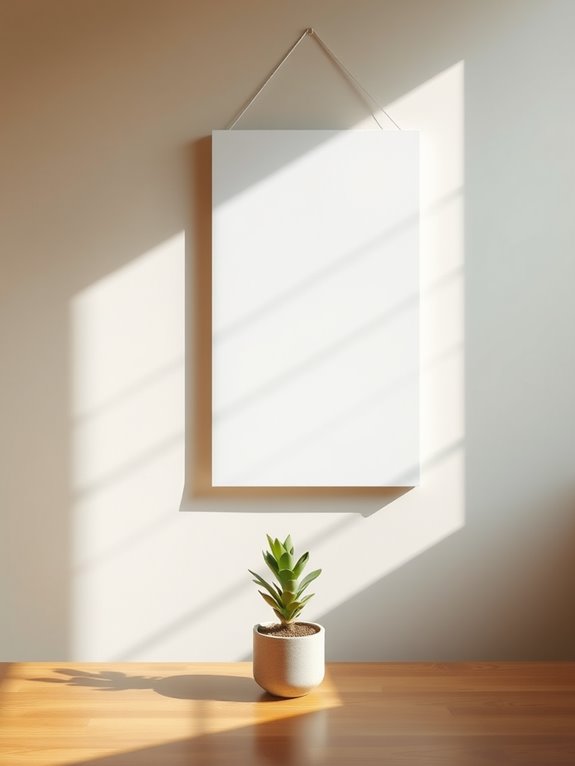
As you immerse yourself in the world of minimalism, you might find that it goes hand in hand with mindfulness, creating a beautiful harmony between what you see and how you feel.
Minimalism encourages you to focus on the essentials, helping you tune into the present moment. When you embrace this art form, you can experience a deeper connection to your surroundings and your emotions.
Embracing minimalism allows you to connect deeply with the present and nurture your emotions.
Here are three ways minimalism enhances mindfulness:
- Eliminates distractions: A clutter-free space allows your mind to settle.
- Promotes intentionality: Each piece of art invites you to engage thoughtfully.
- Encourages reflection: You're prompted to contemplate what truly matters.
Critiques and Challenges of Minimalism
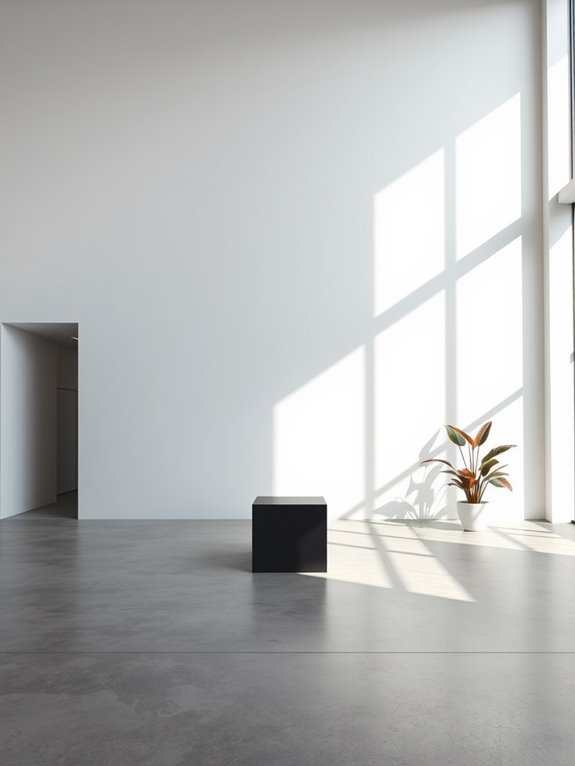
Although minimalism often shines as an attractive aesthetic, it's crucial to reflect on its critiques and challenges that deserve attention.
Some argue that this art form can feel too cold or impersonal, stripping away the emotional connection that deeper narratives provide. You might wonder, does less really mean more? Critics say that minimalism risks oversimplifying complex ideas, leaving viewers craving richer experiences.
Additionally, the exclusivity of minimalist works can alienate audiences who may feel disconnected from the art world. It's crucial to reflect on these perspectives.
Embracing minimalism requires a balance—appreciating its beauty while recognizing its limitations. So, how can you engage with minimalism in a way that feels genuine and inclusive? Your exploration could lead to a deeper understanding of this alluring movement.
The Future of Minimalism in a Digital Age
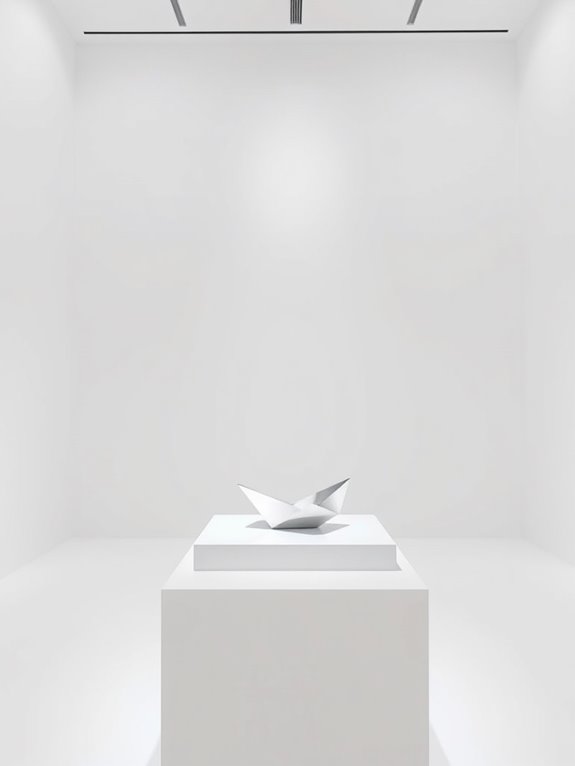
Minimalism is evolving, especially in our fast-paced digital world. You might wonder how it can adapt to technology while maintaining its essence. The future of minimalism can spark creativity and connection in new ways.
Here are three exciting directions to explore:
- Digital Art: Artists are using minimalistic designs on screens, creating stunning visuals that capture attention without clutter.
- Virtual Spaces: Minimalist aesthetics can transform digital environments, making them more serene and inviting for users.
- Mindful Consumption: In a world filled with noise, embracing minimalism can help you focus on what truly matters, both online and offline.
As you embrace these changes, think about how minimalism can enrich your life in this digital age. Are you ready to redefine your artistic journey?
Frequently Asked Questions
How Can I Incorporate Minimalism Into My Daily Life?
Incorporating minimalism into your daily life can be rejuvenating! Start by decluttering your space—choose items that truly spark joy.
Simplify your schedule by prioritizing what matters most to you. Embrace a "less is more" mindset in your wardrobe; select versatile pieces that you love. You'll feel lighter and more focused.
Have you tried reducing digital distractions too? Streamlining your tech can bring peace.
What Are the Benefits of Minimalism Beyond Art?
Minimalism offers so much more than just a visual style.
Imagine a clutter-free mind, a focused life, and deeper connections. You'll find clarity in your priorities, peace in your space, and freedom from distractions.
With less stuff, you can invest more in experiences and relationships. Doesn't that sound appealing?
Embracing minimalism helps you simplify decisions, reduce stress, and appreciate the little things.
Why not start today and see how it transforms your life?
Can Minimalism Be Applied to Other Creative Fields?
Minimalism can transform various creative fields like design, music, and writing.
Imagine decluttering your space, simplifying your designs, or focusing on a single melody that resonates. It helps you strip away distractions, showcasing what truly matters.
You'll find clarity and purpose in your creations. Why not experiment with minimalism in your own projects?
You might discover a revitalizing perspective that inspires you and sparks new ideas! Embrace the simplicity!
How Does Minimalism Challenge Traditional Artistic Conventions?
Minimalism challenges traditional artistic conventions by stripping away excess and focusing on the essential.
It invites you to see beauty in simplicity, to appreciate the space between objects, and to contemplate the emotions behind minimal forms.
Instead of grand statements, it encourages quiet reflection.
Isn't it invigorating to explore art that speaks softly?
What Misconceptions Exist About Minimalist Art?
Many people think minimalist art is just empty spaces or a lack of effort, but that's far from the truth!
You might be surprised to find that it's about stripping down to essentials, revealing beauty in simplicity.
Some believe it lacks emotion, yet it often speaks volumes.
Have you ever stopped to feel the calm in a simple piece?
Embracing minimalism can open your eyes to a whole new world of artistic expression!
Conclusion
Minimalism invites you to see the beauty in simplicity, much like a clear sky after a storm. Just as that fresh air lifts your spirits, minimalist art clears the clutter from our minds, helping us focus on what truly matters. As you explore this creative edge, consider how you can apply its principles in your own life. What can you simplify to uncover your own unique expression? Embrace the calm and let your creativity flourish!
